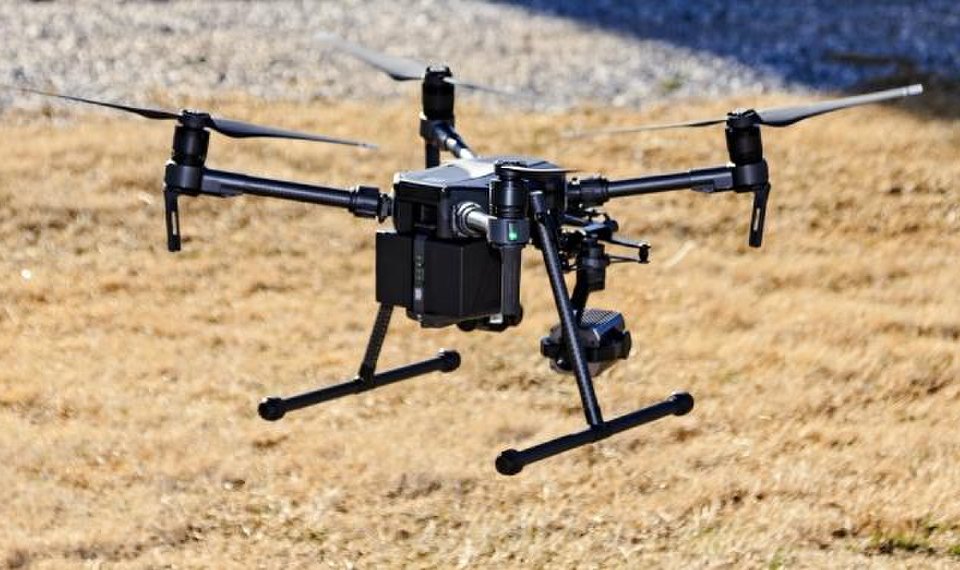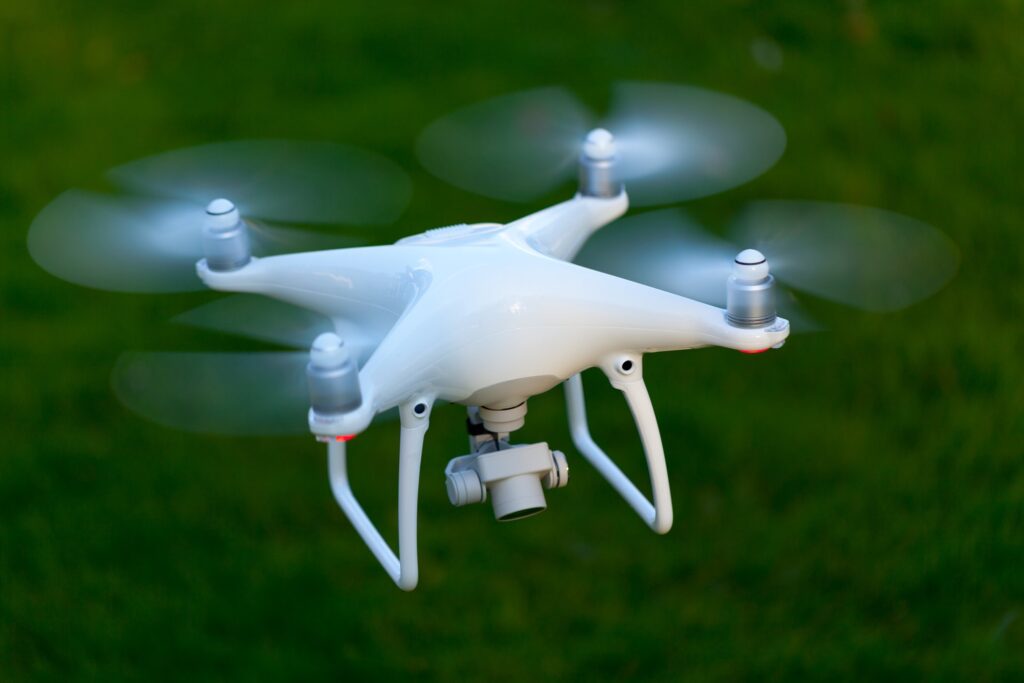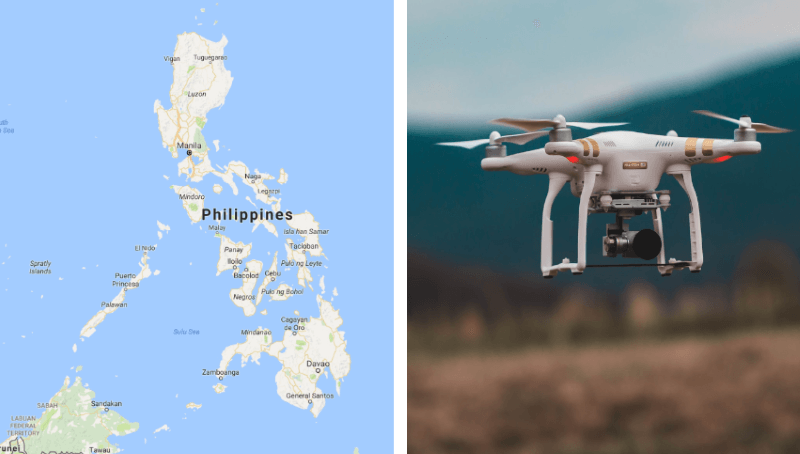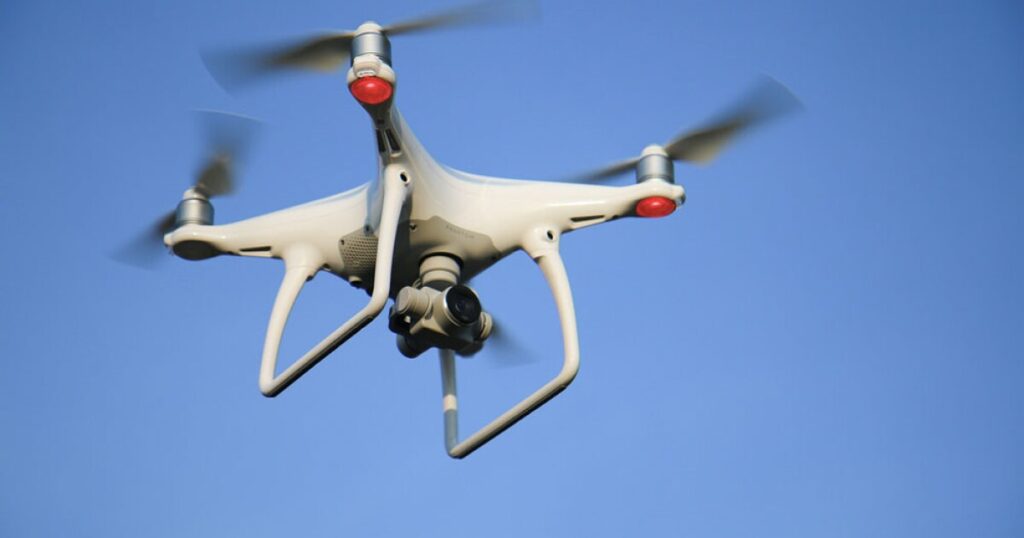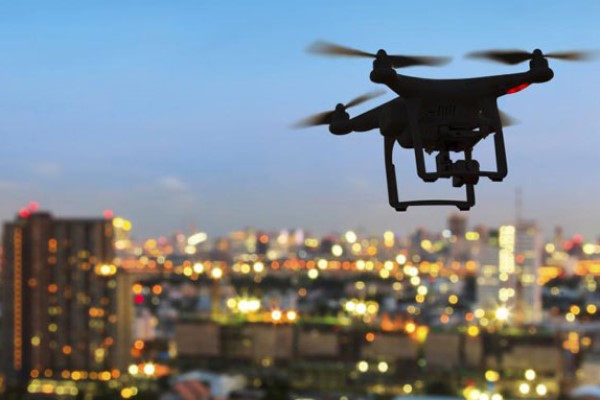With the growing use of drones both commercially and for recreational purposes, there is a lot of confusion about what one can do with their drone in any state in the US. As with other states, Oregon has several Federal drone regulations, and the laws vary depending on whether you intend to fly commercially or for recreation. Although drone operation in Oregon is mainly governed by the FAA, which is the federal USA agency responsible for drone safety, the Oregon legislature has also enacted a couple of supplemental drone operation laws.
This article provides a clear overview of the Oregon drone laws. They are a combination of both FAA regulations and flight controls put in place by the local governments. Although the article has in-depth information about the Oregon drone laws, it is not meant to serve as legal advice and is not entirely exhaustive of all the aspects of drone laws in Oregon.
Oregon Federal UAS Laws
The drone laws created by the Federal government apply to all states of the USA, including Oregon.
Commercial piloting
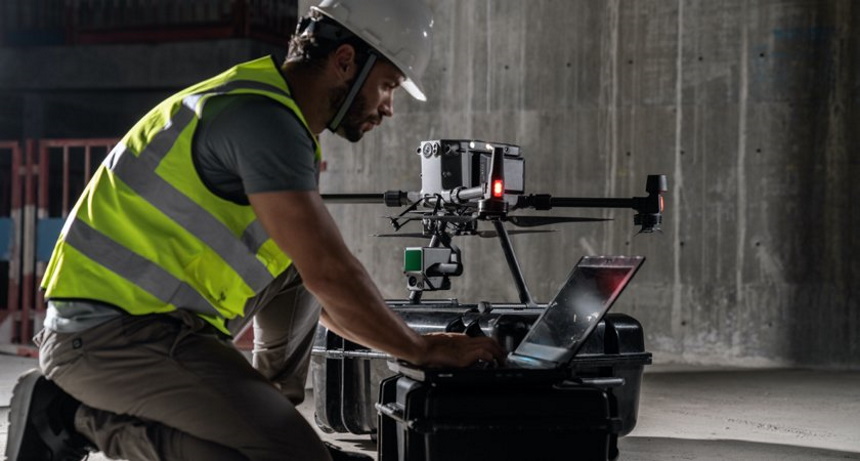
To be eligible for the remote pilot certificate, you must be at least 16 years of age, able to read, write and speak English, and be in a physical and mental condition to safely fly a UAS. You must also study for the knowledge test by reviewing all the test prep materials offered by the FAA. Once you have passed the test, you can apply for the remote pilot certificate on the FAA IACRA electronic system.
You can go ahead and register your drone after you get the remote pilot certificate. You will need your credit or debit card to pay for the $5 registration fees. Go to the FAA drone zone page, then choose Fly under Part 107 to create an account and register your drone. The registration certificate will be available for downloading, and you will get it in your email after you are done.
Are you looking for a drone for vlogging and have no idea where or what to consider, read our article on the best drones for blogging for excellent options.
According to popular reviews, the DJI Mini 2 is one of the best drones for professional-level videos in the market. The drone is feature-rich and offers powerful performance with an impressive battery life of 31 minutes.
Hobby and hunting
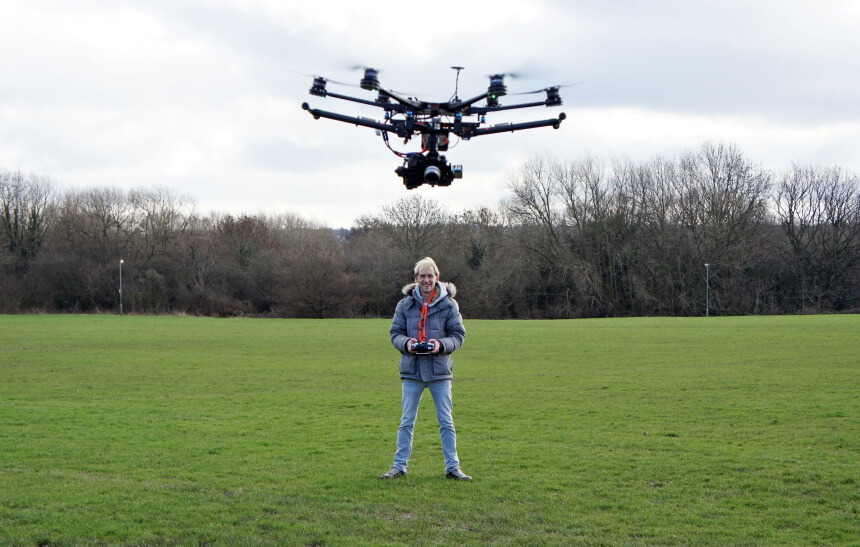
Are you in the market for a drone to document your fishing escapades but feel overwhelmed with all the options? Read our article on the best drones for fishing for the ultimate unit.
The Holy Stone HS720E GPS Drone is one of the most acclaimed drones by experts. You can get it to film yourself fishing as it has a high-quality anti-shake camera and advanced flight modes that make filming such a joy. It is also incredibly easy to use despite having numerous sophisticated features.
Oregon State UAS Laws
The Oregon state UAS laws include:
Statutes and bills
H4 – 837.310 Restrictions and exceptions
No law enforcement agency can operate an unmanned airplane system, acquire or disclose information obtained through the operation, except when:
a) A written warrant specifying the drone’s use period is acquired. The drone’s use period cannot exceed 30 days.
b) Exigent circumstances make it unreasonable to wait for a warrant. In this case, they should get written consent.
Anyone using the drone should indicate that they are flying to train, perform a search, or for rescue operations in an emergency.
H4 – 837.320 Authorized usage upon issuance warrant; exigent circumstances
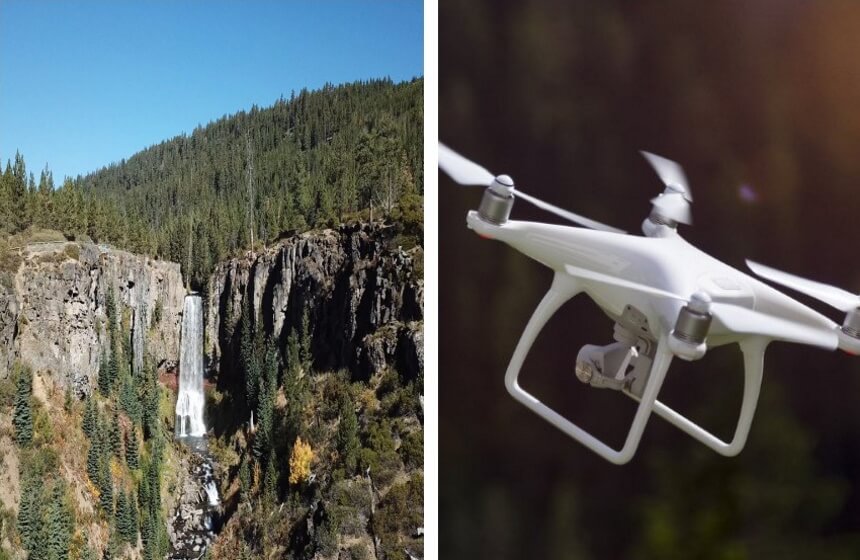
a) A warrant authorizing the use of the UAS has been acquired
b) The law enforcement agency believes that a person is committing a crime, has been convicted, or is about to be convicted, and there are difficult circumstances that would prevent them from getting a warrant on time.
The law enforcement agency must state the period of the UAS operation, and it cannot exceed 30 days. A court can renew the warrant for a period of 30 days if it is moved and there is a good reason for it.
H4 – 837.330 Written consent
A law enforcement agency can operate a UAS to acquire information about an individual or their property if they have given consent.
H4 – 837.335 Search and Rescue; Use in Emergencies
A law enforcement agency may use a UAS to assist in search and rescue activities in an emergency situation or state emergencies declared by the government.
H4 – 837.340 Criminal investigations
A law enforcement agency may operate an unmanned aircraft system, acquire, or disclose information through its operation to reconstruct a crime or accident scene or any similar physical assessment related to a specific criminal investigation.
H4 – 837.345 Training
A law enforcement agency may use a UAS for training purposes.
H4 – 837.360 Restrictions, civil penalties, registration; fees; rules
- Public entities cannot use UAS in the airspace above Oregon state without registering them with the Oregon Aviation Department first.
- Any public entity that violates subsection 1 of this section is subject to civil penalties of up to $10,000 by the Oregon Aviation Department.
- A public entity cannot use the information obtained through the misuse of UAS, as stated in subsection 1 of this section. The information is not admissible in any judicial or administrative proceeding. Also, the information cannot be used to establish reasonable suspicion or probable cause to believe the commission of an offense.
- The Oregon Department of Aviation has a registry of the UAS operated by public entities and may charge a sufficient fee for its maintenance.
- To register a UAS, the Oregon Department of Aviation will require;
I. a) The name of the public body that controls or operates the UAS.
b) The contact information and names of individuals involved in the operation of the UAS.
c) Identification information as required by the department.
II. The public entity that has its UAS registered according to this section must submit an annual report to the Oregon Department of Aviation. The annual report should:
a) Summarize how frequent the UAS has been used by the public body in the preceding calendar years.
b) Summarize the purpose for which the public body has used the UAS in the preceding calendar years.
c) Indicate how the public can access the policies and procedures provided under section 7 of the 2016 Act.
III. The Oregon state aviation board can create any laws that are compatible with the federal laws or regulations for registering UAS.
H4 – 837.365 Unmanned weaponized aircraft systems
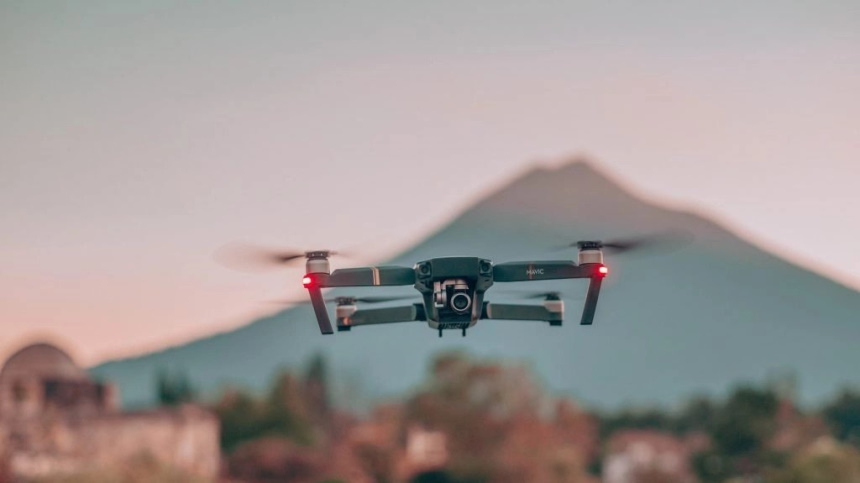
The law may not apply if:
- The drone pilot uses the UAS to release, discharge, propel, or eject a non-lethal projectile for other purposes besides injuring or killing persons and animals.
- The drone pilot uses the UAS for non-recreational purposes and complies with specific authorization from the FAA.
- The drone pilot notifies the Oregon department of aviation, Oregon state police or any other agency that issues permits of the time and place they intend to use the UAS that is capable of releasing or propelling a projectile. The notice should be at least 5 days prior.
- If the UAS owner intends to use a UAS that is capable of releasing or propelling projectiles in a public space, they must notify the general public about the time and place.
- The UAS operator has a liability insurance policy amounting to not less than $1 million that covers injuries resulting from the use of the UAS.
H4 – 837.374 Unsanctioned Interference with an aircraft
1. A person commits a class A violation if they possess or control unmanned aircraft system and recklessly cause it to:
a) Direct a laser at an aircraft while it is in the air.
b) Crash into an airplane while it is still in flight.
c) Prevent an aircraft from landing or taking off.
2. A class A violation is committed by a person who owns or controls a UAS and intentionally causes it to:
a) Direct a laser at an aircraft that is in air
b) Crash into a flying airplane
c) Prevent an aircraft from landing or taking off
3. A person commits a class A violation if they violate subsection 1 of this section and they have one or more convictions under the same subsection at the time of the offense.
4. The court may order forfeiture of the UAS but not as a substitute for any sentence and declare it used in the offense contraband on a person’s second or subsequent conviction.
H4 – 837.375 Interference in an unmanned aircraft system; unauthorized controls
A person who owns a UAS is liable for $5000 in damages, on top of all other remedies allowed by the law. the court will award reasonable attorney fees to the plaintiff in action under this section.
H4 – 837.380. Owners of real property; Attorney General
A person may not fly drones over property more than once. However, this only applies if the drone is flown over the property at least once and the property’s owner has notified the drone operator that they don’t wish the drone to fly over their property.
Also, the property owner does not have a cause of action if the drone takes off or lands or is in the flight path of an airport runway. However, if they file a cause of action and it prevails, they can recover treble damages as well as attorney’s fees.
H4 – 837.385 Preemption by local laws regulating unmanned aircraft systems
The authority to regulate the ownership or operation of a UAS is vested only in the legislative assembly or as expressly authorized by the state statute. Also, a local government, as defined in ORS 174.116, cannot engage, or enact an ordinance or resolution that regulates the ownership or operation of UAS except as expressly authorized by the state statute.
H4 – 837.995 Penalties for crimes involving unmanned aircraft systems

a) Fire a bullet or projectile at an aircraft that is in flight
b) Point a laser at a flying aircraft
c) Crash into a flying aircraft
2. A person commits a class C felony if they interfere with or gain unauthorized control over a UAS licensed under the FAA or operated by the Armed forces of the USA as defined by ORS 352.313.
H4 – HB 4066 Critical Infrastructure Facility
The following facilities are ‘critical infrastructure facility’ if they are completely enclosed by a fence or any other physical barrier that is meant to exclude intruders, or are marked with a conspicuous sign that forbid entry:
- An alumina or petroleum refinery
- An electrical control center, electrical power generating facility, a switching station, or substation.
- A chemical, polymer, or rubber manufacturing facility.
- A water intake structure, wastewater treatment plant, pump station or water treatment facility.
- Natural gas compressor station.
- A liquid natural gas storage facility or terminal.
- A central telecommunications switching office.
- A trucking terminus, port, railroad switching yard, or any other freight transportation facility.
- Any gas processing plant that processes, treats, or fractionated gas.
- A transmission facility used by federally licensed radio and TV stations.
- A steel making facility.
- A high-hazard dam classified by the Water Resources Department.
- Any section of above-ground oil gas pipeline or chemicals with a physical barrier designed to keep out intruders.
- A law enforcement or correctional facility.
A person commits a class A violation if they intentionally or knowingly:
- Operate UAS at an altitude of not more than 400 feet above ground level of any of the critical infrastructure facility.
- Their UAS contacts a person or object in the critical infrastructure facility.
The violations are not applicable to:
- Public entities.
- The federal government.
- An agency for law enforcement.
- Any person under contract or is acting on behalf of the federal government, a public body or a law enforcement agency.
- An operator or owner of the critical infrastructure facility
- If an occupant or owner of the critical infrastructure facility has given prior written consent.
- The property owner where the critical infrastructure facility is located.
- If the property owner where the critical infrastructure facility is located has given prior written consent.
- A person operating UAS for commercial purposes and is in compliance with the authorization given by the FAA.
H4 – 498.128 No drones allowed to pursue wildlife
The State Fish and Wildlife Commission can create rules that prohibit UAS from being used for:
- Angling
- Trapping
- Hunting
- Angling, hunting, or trapping by harassing, tracking, locating or scouting wildlife.
- Interfering with the legal act of an individual who is angling, hunting, or trapping.
Are you in need of a drone for hunting but have no idea what to choose, read our in-depth article on the best drones for hunting for an easier and better-informed choice.
H4 – HB2481 Law enforcement equipment
According to subsection (1) of Section 1, a law enforcement agency may not receive UAS that are armored or weaponized from a military equipment surplus program operated by the federal government.
Oregon Local UAS Laws
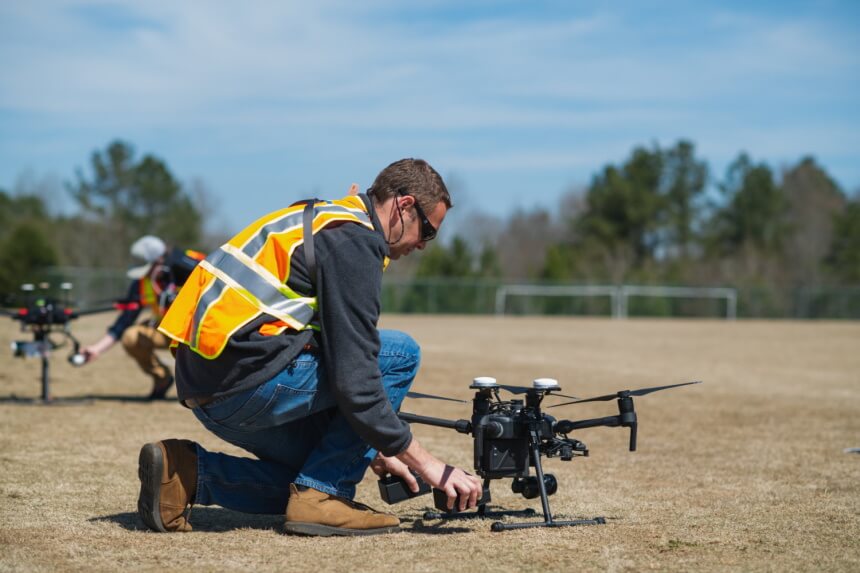
Portland
The Municipal Law// 2007 is a city ordinance that prohibits the flying of drones in or over any city park, except in places designated for such use by the director.
Eugene
The City of Eugene allows its employees to use drone as authorized by the City manager’s administrative order Order No. 21-19-03 in April, 2019. Each department can have different uses for drones, and they must create specific policies to establish guidelines for safe, efficient, and lawful operations of drones.
Drones may be used in the city of Eugene to:
a) Protect the lives and property of citizens and first responders.
b) Support situation awareness during emergencies.
c) Inspect and monitor the city’s facilities, infrastructure, assets and natural resources.
d) Obtain images and videos for outreach, including printed materials on social media.
All drone operators are required to follow the published FAA drone laws for safety when using drones in public. The drone operators should be considerate of park users and other visitors in public spaces. Also, they should ever fly a drone in a way that disrupts wildlife and other animals.
Metro parks
The Park rules// 2018 is an ordinance that prohibits the use of drones in the boundaries of any Oregon Metro Park except for areas designated for such use. The restrictions also prohibit flying drones under 400ft in the airspace above water and parklands.
Coastline
Drone pilots in Oregon’s coastline are urged to operate their drones responsibly in accordance with the established FAA laws. Drone use is allowed in most beaches and state parks in the Coastline with a few restrictions.
The Oregon coastline drone regulations prohibit drone pilots from flying near animals. Animals may see drones as some kind of threat, causing panic among them that could result in injuries. Therefore, the use of drones near wildlife refuge area and offshore rock is not allowed. Also, drones cannot be flown within campgrounds.
FAQ
Are drones allowed on Oregon personal property?
Oregon drone laws prohibit the flying of drones over personal property more than once. The drone has to be flown at least once, and the property owner must notify the drone operator that they do not wish to see the drone flown over their property again.
How to register drones in Oregon?
The FAA requires all drones weighing 250g or more to be registered. The requirement applies to all the 50 states in the US, including Oregon. Failure to register your drone can result in regulatory and criminal sanctions. You may face civil penalties of up to $27,500 from the FAA and criminal penalties of up $250,000 or imprisonment for up to three years. You must register your drone prior to operating it.
To register your drone you will need to provide:
Information:
-
- Physical address and mailing address
- Email address
- Contact number
- The make and model of your drone
- The specific remote ID serial number provided by your drone’s manufacturer.
- Credit card or Debit card
Registration fees
- According to Part 107, you need to pay $5 dollars to register each drone and it is valid for three years.
- To register for the Exception for recreational flyers, you have to pay $5, which is also valid for three years.
- Once you have registered your drone, you cannot transfer the registration between types.
To register a drone, you must be:
- 13 years of age or more. If you own a drone and are below 13 years, a person above 13 years must register it.
- A US citizen or a legal permanent resident. If you are a foreign operator, the FAA will consider the certificate given to you as a recognition of ownership rather than a certificate of US aircraft registration.
You can register your drone online by going to the FAA drone zone page. You will see two registration options; t fly under part 107 as public aircraft or to fly under the exception of recreational flyers. Choose the one that suits you then fill in all the information required. You can also register by mail if you click on the ‘register by paper’ option.
Once you are done with the registration, a certificate of registration will be available to download and will be sent to your email. Whenever you are flying the drone, ensure you have the certificate in print or electric form when asked to provide proof of registration.
Final Thoughts
You can fly a drone for commercial or recreational purpose as long you follow the laws established by the FAA and flight controls put in place by the Oregon Aviation regulations. The Oregon legislature has created additional laws to govern Oregon drone operations, and you must be familiar with them to avoid being on the wrong side of the law. We have listed all the Oregon drone laws in this article to help you avoid the confusion as to what you can do with your drone in the state.
The overview of the law in the article is not exhaustive of on all aspects of drone laws in Oregon and cannot serve as legal advice but a useful source of information you ought to know before flying your drone in the state.







